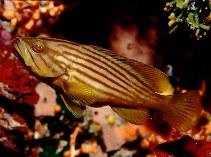http://www.fishbase.org/Summary/speciesSummary.php?genusname=Epinephelus&speciesname=costae ---> http://fishbase.de/Summary/speciesSummary.php?genusname=Epinephelus&speciesname=costae
http://fishbase.de/Summary/speciesSummary.php?genusname=Epinephelus&speciesname=costae ---> https://fishbase.de/Summary/speciesSummary.php?genusname=Epinephelus&speciesname=costae
https://fishbase.de/Summary/speciesSummary.php?genusname=Epinephelus&speciesname=costae ---> http://fishbase.de/summary/Epinephelus-costae.html
http://fishbase.de/summary/Epinephelus-costae.html ---> https://fishbase.de/summary/Epinephelus-costae.html
Epinephelus costae, Goldblotch grouper : fisheries

You can
sponsor
this page
Common name (e.g. trout)
Genus + Species (e.g. Gadus morhua)
-

-
About this page
-
Languages
-
User feedbacks
-
Citation
-
Uploads
-
Related species
-


 Goldblotch grouper
Add your observation in
Fish Watcher
Upload your
photos
and
videos
Goldblotch grouper
Add your observation in
Fish Watcher
Upload your
photos
and
videos
Pictures
|
Google image
 Epinephelus costae
Epinephelus costae
Picture by
Minguell, C.
Teleostei (teleosts) >
Perciformes/Serranoidei
(Groupers) >
Epinephelidae
(Groupers)
Etymology:
Epinephelus:
Greek, epinephelos = cloudy (Ref.
45335
)
.
More on author:
Steindachner
.
Environment: milieu / climate zone / depth range / distribution range
Ecology
Marine; demersal; depth range 1 - 300 m (Ref.
27000
), usually 4 - 160 m (Ref.
95541
). Subtropical; 47°N - 13°S, 27°W - 42°E
Eastern Atlantic and Mediterranean Sea. Records of
Epinephelus alexandrinus
from Madeira are apparently based on misidentifications of
Myctoperca fusca
.
Length at first maturity / Size / Weight / Age
Maturity: L
m
32.5
, range 30 - 35 cm
Max length : 140 cm SL male/unsexed; (Ref.
12382
)
Dorsal
spines
(total): 11;
Dorsal
soft rays
(total): 15-17;
Anal
spines
: 3;
Anal
soft rays
: 8. Distinguished by the following characteristics: head and body brownish, fins darker; two dark lines on head, one from lower edge of the eye to the ventral rear edge of the interopercle, 2nd from the dark maxillary streak to the lower edge of the preopercle; adults brown or greyish brown; distinct yellow blotch on body below the spinous dorsal fin; body depth less than head length, depth contained 3.0-3.4 times in Sl; head length 2.5-2.7 times in SL; interorbital area convex; angular preopercle, 2-3 enlarged serrae at the angle; middle and lower opercular spines flat but distinct, upper spine not apparent; straight or slightly convex upper edge of operculum; maxilla usually reaching a vertical rear edge of eye, ventral edge of maxilla with low step, no scale on maxilla; 2 rows of teeth on midlateral part of lower jaw; lateral body scales ctenoid, with auxilliary scales in adults; pyloric caeca 17 (Ref.
89707
).
Found on sand, mud or rock bottoms (Ref.
6789
). Juveniles form small groups (Ref.
12382
) in shallow water (Ref.
89707
). Feeds on crustaceans, mollusks, and fish (Ref.
12382
). Does not adapt well in aquariums (Ref.
12382
). Maximum depth from Ref. 128827.
Life cycle and mating behavior
Maturity
|
Reproduction
|
Spawning
|
Eggs
|
Fecundity
|
Larvae
Heemstra, P.C. and J.E. Randall
, 1993. FAO Species Catalogue. Vol. 16. Groupers of the world (family Serranidae, subfamily Epinephelinae). An annotated and illustrated catalogue of the grouper, rockcod, hind, coral grouper and lyretail species known to date. Rome: FAO. FAO Fish. Synop. 125(16):382 p. (Ref.
5222
)
IUCN Red List Status (Ref.
130435
)
Data deficient (DD)
; Date assessed:
17 November 2016
CITES
Not Evaluated
Not Evaluated
Threat to humans
Harmless
Human uses
Fisheries: minor commercial
FAO - Publication:
search
|
FishSource
|
More information
Countries
FAO areas
Ecosystems
Occurrences
Introductions
Stocks
Ecology
Diet
Food items
Food consumption
Ration
Common names
Synonyms
Metabolism
Predators
Ecotoxicology
Reproduction
Maturity
Spawning
Spawning aggregation
Fecundity
Eggs
Egg development
Age/Size
Growth
Length-weight
Length-length
Length-frequencies
Morphometrics
Morphology
Larvae
Larval dynamics
Recruitment
Abundance
BRUVS
References
Aquaculture
Aquaculture profile
Strains
Genetics
Electrophoreses
Heritability
Diseases
Processing
Nutrients
Mass conversion
Collaborators
Pictures
Stamps, Coins Misc.
Sounds
Ciguatera
Speed
Swim. type
Gill area
Otoliths
Brains
Vision
Tools
Bio-Quiz
|
E-book
|
Field guide
|
Identification keys
|
Length-frequency wizard
|
Life-history tool
|
Point map
|
Classification Tree
|
Catch-MSY
|
Special reports
Check for Aquarium maintenance
|
Check for Species Fact Sheets
|
Check for Aquaculture Fact Sheets
Download XML
Summary page
|
Point data
|
Common names
|
Photos
Internet sources
AFORO (otoliths)
|
Aquatic Commons
|
BHL
|
Cloffa
|
BOLDSystems
|
Websites from users
|
Check FishWatcher
|
CISTI
|
Catalog of Fishes
:
genus
,
species
|
DiscoverLife
|
DORIS
|
ECOTOX
| FAO - Publication:
search
|
Faunafri
|
Fishipedia
|
Fishtrace
| GenBank:
genome
,
nucleotide
|
GloBI
|
Google Books
|
Google Scholar
|
Google
|
IGFA World Record
|
MitoFish
|
National databases
|
Otolith Atlas of Taiwan Fishes
|
Public aquariums
|
PubMed
| Reef Life Survey | Socotra Atlas |
Tree of Life
| Wikipedia:
Go
,
Search
| World Records Freshwater Fishing |
Zoological Record
Estimates based on models
Preferred temperature (Ref.
123201
): 13.4 - 27.5, mean 19 °C (based on 650 cells).
Phylogenetic diversity index (Ref.
82804
): PD
50
= 0.5000 [Uniqueness, from 0.5 = low to 2.0 = high].
Bayesian length-weight: a=0.00832 (0.00506 - 0.01366), b=3.01 (2.87 - 3.15), in cm total length, based on LWR estimates for this species & Genus-body shape (Ref.
93245
).
Trophic level (Ref.
69278
): 3.9 ±0.61 se; based on food items.
Generation time: 9.2 ( na - na) years. Estimated as median ln(3)/K based on 2
growth studies.
Resilience (Ref.
120179
): Medium, minimum population doubling time 1.4 - 4.4 years (tm=4).
Fishing Vulnerability (Ref.
59153
): High to very high vulnerability (66 of 100).
Price category (Ref.
80766
):
Very high
.
Nutrients (Ref.
124155
): Calcium = 29.4 [12.3, 68.2] mg/100g; Iron = 0.754 [0.358, 1.747] mg/100g; Protein = 18.6 [16.9, 20.1] %; Omega3 = 0.283 [0.154, 0.524] g/100g; Selenium = 41.6 [19.3, 100.7] μg/100g; VitaminA = 17.3 [4.1, 73.8] μg/100g; Zinc = 0.665 [0.425, 1.080] mg/100g (wet weight);
Back to Search
Random Species
Back to Top
Accessed through:
Not available
FishBase mirror site :
localhost
Page last modified by :
mrius-barile
- 20 July 2016
Fatal error
: Uncaught ArgumentCountError: Too few arguments to function checkEcotox(), 1 passed in /var/www/html/summary/SpeciesSummary.php on line 2304 and exactly 3 expected in /var/www/html/includes/speciessummary.lib.php:2580 Stack trace: #0 /var/www/html/summary/SpeciesSummary.php(2304): checkEcotox() #1 {main} thrown in
/var/www/html/includes/speciessummary.lib.php
on line
2580
|